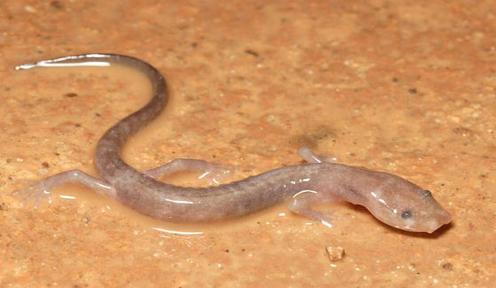


|
Cryptobranchidae :
The name indicates one of their paedomorphic features, gill slits (Kryptos(Gr.)=hidden, Branchion(Gr.)=gill). These are large to very large (up to 1520 mm in Andrias davidianus, the largest salamander in the world) aquatic salamanders. Cryptobranchid coloration varies, ranging from brownish gray to yellow, green, and orange (C. alleganiensis at night during breeding season). All are active at night and feed on a variety of organisms, including worms, mollusks, crustaceans, lampreys, fish, frogs, reptiles, and small mammals. Cryptobranchids are specialized suction feeders; due to the presence of flexible symphyseal cartilage at the front of the lower jaw (where both bones meet), they are able to suction feed with the left or right side of their mouth. Males are territorial and make small nests under rocks where eggs are deposited and externally fertilized. Some morphological characters for the group are: 1) ribs unicapitate; 2) operculum fused to the ear capsule (also present in Sirenidae); 3) lacrimals absent; 4) prootic and exoccipitals separate; 5) fleshy skin folds; 6) large size; 7) spiracle remains open in adults.
Genus :
Andrias (2 species)
Cryptobranchus (1 species)
|
